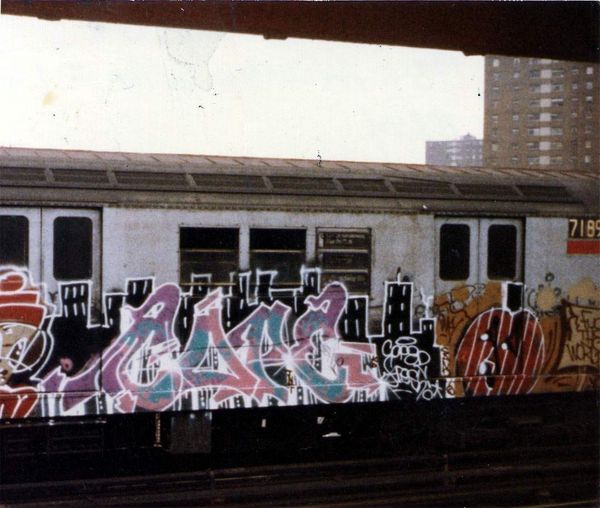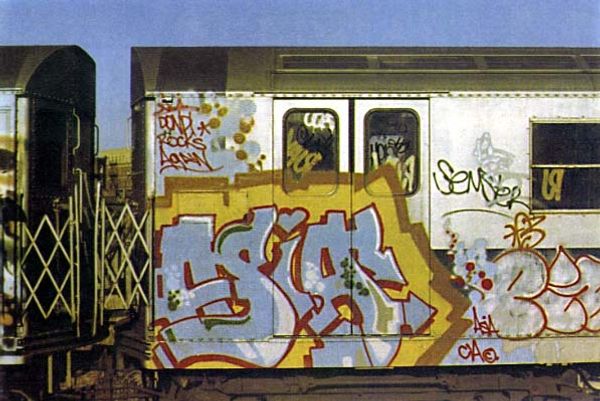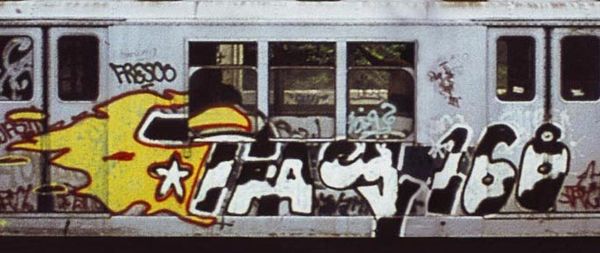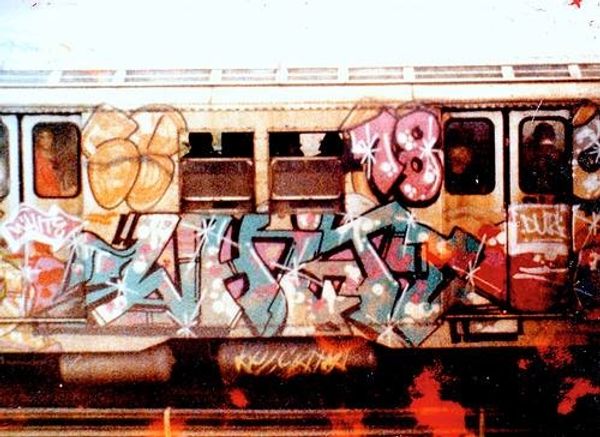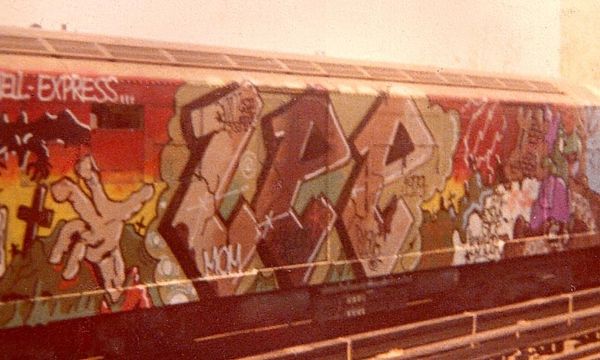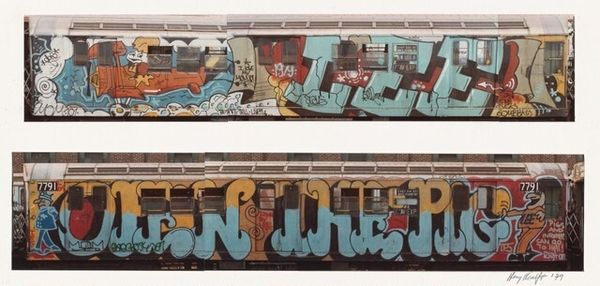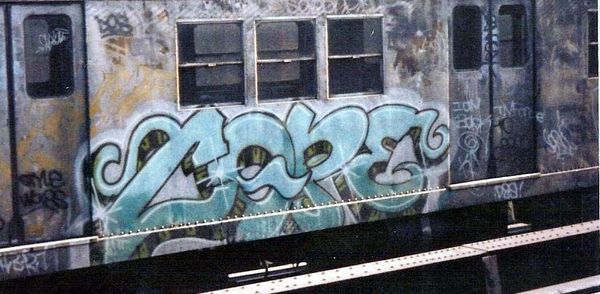
mixed-media, painting, public-art
#
mixed-media
#
contemporary
#
street-art
#
painting
#
graffiti art
#
street art
#
street shot
#
urban advertising
#
public-art
#
road
#
graffiti-art
#
street graffiti
#
geometric
#
urban life
#
urban art
#
street photography
#
text in urban environment
#
city culture
Copyright: Lee Quinones,Fair Use
Curator: Let's discuss this "Untitled" mixed-media piece by Lee Quinones from 1979. My immediate impression is a raw vibrancy, like condensed energy exploding across a grimy surface. Editor: I see more than mere "energy." I read a desperate cry for visibility etched onto a symbol of urban decay, a profound socio-political statement about a marginalized community. Curator: Undoubtedly, context enriches our interpretation. Notice how the overlapping planes and contrasting colors create a complex visual field. The interplay of abstract shapes with textual fragments—what strikes you? Editor: That text is crucial. Phrases like "I’m just surviving in New York," alongside stylized tags, position this train car as a mobile billboard broadcasting the experiences of those rendered invisible by systemic oppression. It's resistance inscribed onto the cityscape. Curator: Interesting how you navigate that interface between form and explicit messaging. Look closer—isn’t there something appealing about the geometry that underpins everything? Editor: Sure, there is formal strength in how Quinones uses negative space. But what resonates most are the echoes of a society teetering on the edge, anxieties expressed through rebellious art. It’s about challenging the established order and reclaiming public space. This act alone becomes symbolic, even if fleeting, and is thus charged by agency. Curator: Agency definitely echoes here. If you abstract the cultural setting of 1970s NYC, consider that this artwork offers such dynamism simply with the strategic use of lines and shapes that communicate beyond legibility. Editor: Indeed. And remember, too, the very act of defacing private property for political expression—it pushes boundaries and ignites debates about whose voices matter in the city. The city is screaming. Curator: A point well taken. Perhaps we both agree the piece encapsulates something unique: It’s as visually exciting as it is socially pertinent. Editor: Ultimately, viewing art in a vacuum robs it of power. Understanding art in this historical framework grants viewers a deeper engagement that transcends aesthetics and urges conversation and empathy.
Comments
No comments
Be the first to comment and join the conversation on the ultimate creative platform.
